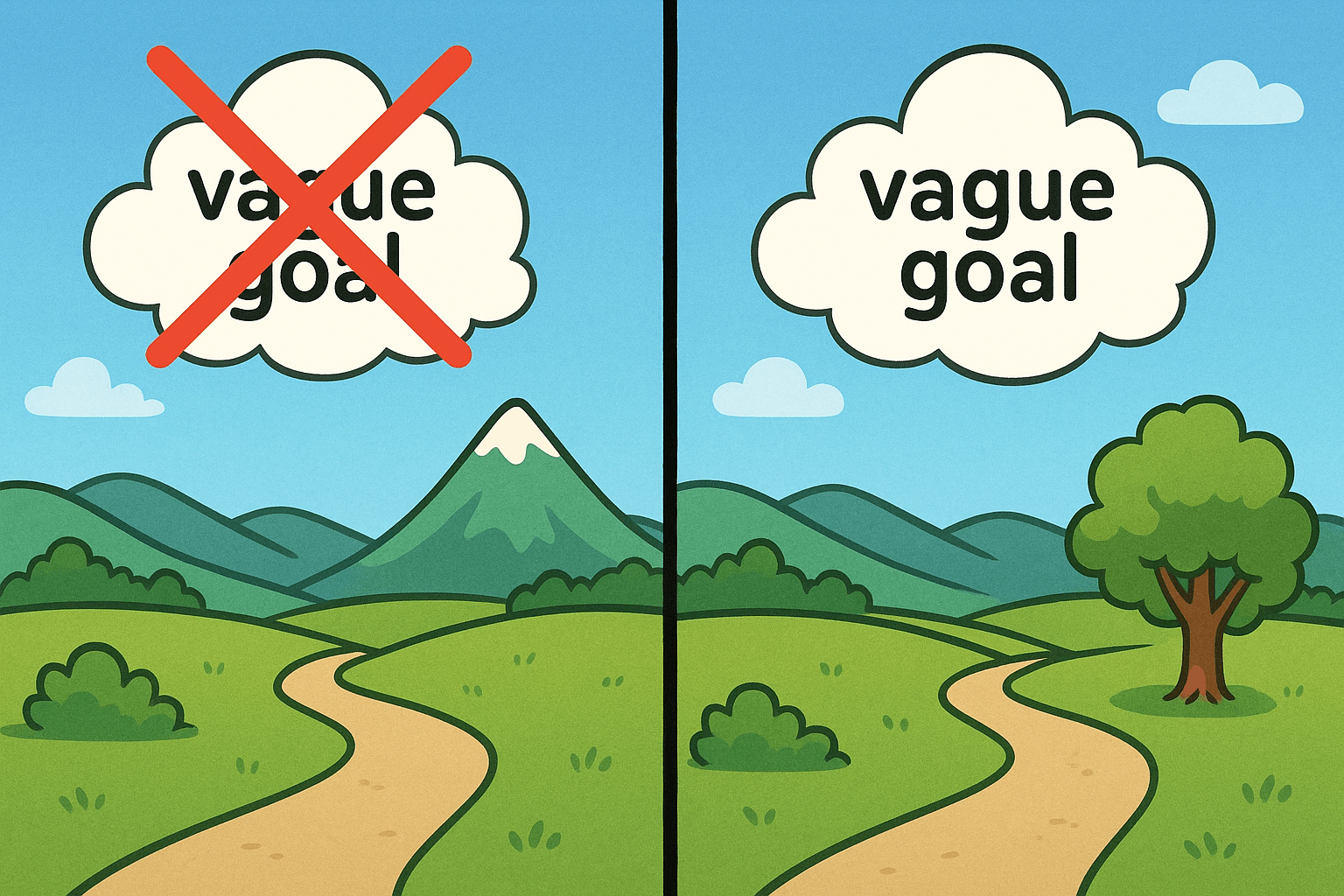Crafting an Effective Social Media Strategy: A Step-by-Step Guide
Staring at your empty content calendar again? You’re not alone. We’ve seen thousands of marketers freeze up when it comes to building a social media strategy from scratch—it’s like being handed a paintbrush and told to create a masterpiece when you’re not even sure what colors go together.
Here’s the thing: creating a killer social media strategy doesn’t require a marketing degree or years of trial and error. What it does need is a clear roadmap, some smart planning, and the right mix of creativity and data-driven thinking. After helping over 50,000 marketers streamline their social media efforts, we’ve cracked the code on what actually works.

This guide breaks down exactly how to build a social media strategy that delivers real results—not just pretty vanity metrics. You’ll walk away with a foolproof framework, practical templates, and insider knowledge about the 2025 trends that are shaping how audiences engage with brands. Plus, we’ll share the biggest mistakes that derail most strategies before they even get started.
Step 1: Set Goals That Actually Matter
Goals without teeth are just wishful thinking. The difference between successful social media campaigns and the ones that fizzle out comes down to one thing: specificity. You need SMART goals that tie directly to business outcomes, not just social media vanity metrics that look impressive on a dashboard.
Start by asking yourself what you want social media to accomplish for your business. Is it driving website traffic? Generating qualified leads? Building brand awareness in a specific market? Each goal should be measurable, achievable, and tied to a concrete deadline. Instead of “increase followers,” aim for “gain 500 new Instagram followers in Q1 who match our target customer profile” (Source: Network Solutions).

The magic happens when your social goals connect to revenue goals. If you’re a B2B company, perhaps you want to generate 20 new qualified leads per month through LinkedIn content. For e-commerce brands, it might be driving 15% of monthly website traffic through social channels. This connection ensures your social efforts contribute to what actually keeps the lights on.
| Goal Type | Weak Example | Strong Example |
|---|---|---|
| Brand Awareness | Get more followers | Reach 10,000 unique users monthly on Instagram within 6 months |
| Engagement | Increase likes | Achieve 5% average engagement rate across all posts by Q2 |
| Lead Generation | Get more leads | Generate 25 marketing qualified leads monthly through LinkedIn content |
| Website Traffic | Drive traffic | Increase social referral traffic by 30% compared to last quarter |
Step 2: Know Your Audience Like Your Best Friend
Here’s where most strategies go sideways: assumptions. You think you know who’s engaging with your content, but until you dig into the data, you’re basically throwing darts blindfolded. Your audience research needs to go beyond basic demographics—you want to understand their pain points, preferences, and behavior patterns.
Start with your existing analytics to see who’s already engaging with your content. What age groups are most active? Which posts get the most saves versus shares? When are your followers most likely to be scrolling? This data goldmine sits right in your platform analytics, but surprisingly few marketers actually use it to inform their strategy.
Next, survey your current customers and social media followers to understand what motivates them to engage or convert (Source: Mastroke). Ask specific questions: What type of content do you find most valuable? Which social platforms do you use daily? What challenges are you trying to solve? The insights from these conversations will dramatically improve your content relevance.
For deeper audience intelligence, check out our guide on setting social media goals that align with audience expectations. This foundation work might seem tedious, but it’s what separates successful campaigns from the ones that get lost in the noise.
Step 3: Spy on Your Competition (Ethically, Of Course)
Your competitors are running their own social media experiments, and you’d be crazy not to learn from their wins and losses. But here’s the plot twist: most people do competitive analysis wrong. They focus on follower counts and vanity metrics instead of the stuff that actually matters—content performance and audience engagement patterns.
Look beyond the surface numbers and examine what type of content generates real engagement for your competitors. Which posts get the most comments versus just likes? What topics spark meaningful conversations? How often do they post, and when do they get the most interaction? This intelligence helps you identify content gaps and opportunities for differentiation (Source: Later).
Pay special attention to the brands that consistently show up in your target audience’s feeds. These aren’t necessarily direct competitors—they’re whoever has captured your audience’s attention. A B2B software company might learn valuable lessons from how a productivity guru engages their shared audience on LinkedIn.
- Analyze their most popular content from the past three months
- Note their posting frequency and timing patterns
- Identify which platforms drive their best engagement
- Look for content themes and topics they avoid
- Study how they respond to comments and handle customer service
The goal isn’t to copy what they’re doing—it’s to understand what resonates with your shared audience and find ways to do it better or differently. For tactics they might be missing, check out these 9 overlooked strategy elements that could give you a competitive edge.
Step 4: Pick Your Platforms Like a Pro
Platform selection isn’t about being everywhere—it’s about being where your audience hangs out AND where you can create quality content consistently. The biggest strategy killer we see is the “spray and pray” approach where brands try to maintain a presence on every platform and end up doing mediocre work everywhere.
Each platform serves different purposes and attracts different audiences. Instagram thrives on visual storytelling and appeals to younger demographics who appreciate behind-the-scenes content and aesthetic consistency. LinkedIn is your go-to for B2B relationship building, thought leadership, and professional networking. Twitter (now X) excels at real-time conversations, customer service, and industry news sharing.
The key is matching your content creation strengths with platform expectations and audience behavior. If you’re great at creating educational video content, TikTok or Instagram Reels might be perfect. If your team excels at written thought leadership pieces, LinkedIn should be your priority. Select platforms based on where your audience spends time and what aligns with your business goals—not every platform is necessary (Source: Mastroke).
| Platform | Best For | Content Format | Audience Type |
|---|---|---|---|
| Visual brands, lifestyle content | Photos, Stories, Reels | 18-34, visual learners | |
| B2B, professional services | Articles, industry insights | 25-54, business professionals | |
| Twitter/X | Real-time updates, customer service | Short text, news, threads | 25-49, early adopters |
| TikTok | Entertainment, education | Short-form video | 16-24, mobile-first users |
| Community building, events | Mixed media, groups | 25-54, diverse interests |
Step 5: Define Your Brand Voice and Content Pillars
Your brand voice is what makes people stop scrolling and actually pay attention to your content. It’s the personality that shines through every post, comment, and interaction. Without a consistent voice, your social media presence feels scattered and forgettable—like meeting someone at a party who changes personalities every five minutes.
Think about brands with instantly recognizable voices. Wendy’s built a following with their sassy, witty responses. Nike inspires with motivational messaging. Buffer educates with transparent, helpful content. These brands succeed because they maintain consistent personality traits across all their communications.
Establish a consistent brand voice, visual style, and messaging guidelines to ensure coherence across platforms (Source: Later). Document your brand’s personality traits, tone guidelines, and the types of language you’ll use or avoid. This documentation becomes crucial when multiple team members create content or when you work with external creators.
Content pillars are the 3-5 core themes that guide your content creation. They keep you focused and ensure variety in your posting schedule. For a fitness brand, pillars might include workout tips, nutrition education, motivation, community spotlights, and behind-the-scenes content. For a B2B software company, you might focus on industry insights, product education, customer success stories, company culture, and thought leadership.

| Content Pillar | Purpose | Example Content Types | Posting Frequency |
|---|---|---|---|
| Educational | Position as expert | How-to posts, tips, tutorials | 40% of content |
| Behind-the-scenes | Humanize brand | Team photos, process videos | 20% of content |
| User-generated | Build community | Customer stories, reviews | 20% of content |
| Product highlights | Drive sales | Features, benefits, demos | 10% of content |
| Industry news | Stay relevant | Trend commentary, news reactions | 10% of content |
Step 6: Build a Content Calendar That Actually Works
A content calendar isn’t just a fancy spreadsheet—it’s your strategic command center that transforms random posting into purposeful communication. The brands that see real results from social media are the ones that plan their content strategically rather than scrambling for post ideas at the last minute.
Your calendar should balance promotional content with value-driven posts, seasonal campaigns with evergreen material, and different content formats to keep your audience engaged. Build a high-impact content calendar to schedule posts, campaigns, and key dates, ensuring regular and strategic publishing (Source: Later). Include important dates like industry events, product launches, holidays, and trending moments relevant to your audience.
The secret sauce is variety. Plan for a mix of content formats—images, videos, stories, live streams, and user-generated content—to maximize reach and engagement (Source: Network Solutions). Different formats perform better at different times and serve different purposes in your customer journey.

For practical implementation, check out our detailed guide on creating the perfect social media content calendar with templates and examples. Tools like Trello, Asana, or dedicated social media management platforms can streamline your planning process.
- Start with major company events, product launches, and industry dates
- Add seasonal content opportunities and trending topics
- Fill in with educational content that supports your business goals
- Schedule promotional content strategically (follow the 80/20 rule: 80% value, 20% promotion)
- Leave flexibility for real-time engagement and trending opportunities
Step 7: Master the Art of Social Engagement
Here’s the hard truth: social media isn’t a broadcasting channel—it’s a conversation. The brands that treat it like a megaphone for their marketing messages miss the entire point and wonder why their engagement rates tank. Real social media success comes from building genuine relationships with your community.

Respond promptly to comments, messages, and mentions to foster relationships and trust (Source: Two Minute Reports). But don’t just respond—add value to the conversation. Ask follow-up questions, share additional resources, and show genuine interest in your audience’s challenges and successes.
Engagement isn’t just about responding to your own posts. Join conversations happening in your industry, comment thoughtfully on your connections’ content, and share valuable insights in relevant groups and forums. This proactive approach expands your reach and positions you as a helpful resource rather than just another brand trying to sell something.
Collaborate with content creators, influencers, or other brands to expand your reach and credibility (Source: Network Solutions). These partnerships should feel natural and provide genuine value to both audiences. Look for creators who share your values and have engaged communities that overlap with your target market.
For specific tactics to boost your engagement rates, dive into our proven engagement strategies that successful brands use to build active communities.
Step 8: Measure What Matters (Not Just What’s Easy)
Vanity metrics are the junk food of social media analytics—they might make you feel good temporarily, but they don’t nourish your business goals. Follower count, likes, and total reach might look impressive in a presentation, but they don’t tell you whether your social media efforts are actually contributing to business growth.
Track metrics aligned with your goals, such as engagement rate, reach, click-throughs, conversions, and ROI (Source: Two Minute Reports). If your goal is lead generation, measure how many qualified leads come from each platform. If you’re focused on brand awareness, track share of voice and sentiment in your industry conversations.
The key is connecting social media metrics to business outcomes. Use analytics tools to assess what’s working and where to optimize, reporting results regularly to stakeholders (Source: Two Minute Reports). Google Analytics can help you track social referral traffic and conversions, while platform-specific analytics provide deeper insights into content performance.
| Business Goal | Key Metrics to Track | Tools to Use |
|---|---|---|
| Brand Awareness | Reach, impressions, share of voice | Native analytics, Google Analytics |
| Lead Generation | Click-through rate, conversion rate, cost per lead | Google Analytics, CRM integration |
| Customer Service | Response time, resolution rate, sentiment | Social listening tools, native analytics |
| Sales | Social commerce conversions, revenue attribution | E-commerce analytics, UTM tracking |
For a detailed breakdown of measuring social media ROI, check out our comprehensive ROI measurement guide with practical formulas and benchmarks.
Step 9: Optimize and Evolve Your Strategy
Social media algorithms are like that friend who changes their mind every few months—just when you think you’ve figured them out, they switch things up. The most successful social media strategies aren’t static documents gathering dust in a folder; they’re living, breathing frameworks that evolve based on performance data and platform changes.
Regularly review performance data, test new content types, and refine your strategy based on insights and changing platform algorithms (Source: Later). Set up monthly or quarterly strategy reviews where you analyze what’s working, what isn’t, and what new opportunities have emerged.
Social media algorithms are increasingly prioritizing authentic, value-driven content and meaningful engagement over vanity metrics (Source: Two Minute Reports). This shift means your content needs to spark genuine conversations and provide real value to your audience. Surface-level engagement tactics and clickbait content are becoming less effective.
Stay updated on platform changes and emerging trends to maintain relevance and effectiveness (Source: Two Minute Reports). Video content, short-form stories, and interactive features like polls and quizzes continue to drive higher engagement rates in 2025 (Source: Later). But trends aren’t one-size-fits-all—test new formats with your specific audience before committing significant resources.
Common Mistakes That Kill Social Media Strategies
Even with the best intentions, most social media strategies fail because of predictable mistakes that are completely avoidable. We’ve seen these patterns repeated thousands of times, and they’re the reason why many businesses give up on social media marketing altogether.
The biggest strategy killer is trying to be everywhere at once. Focusing on too many platforms at once leads to diluted efforts and inconsistent messaging (Source: Mastroke). It’s better to dominate two platforms than to be mediocre on five. Choose your platforms strategically and commit to creating quality content consistently.
Another common trap is setting vague goals or tracking only vanity metrics instead of actionable KPIs tied to business outcomes (Source: Later). “Increase brand awareness” isn’t a goal—it’s a wish. “Increase branded search volume by 25% in six months through consistent LinkedIn thought leadership content” is a goal you can actually measure and achieve.
- Posting without a strategic plan or content calendar
- Ignoring audience feedback and engagement opportunities
- Using the same content strategy across all platforms
- Focusing solely on promotional content instead of providing value
- Neglecting regular analysis and optimization, resulting in stagnation and missed opportunities
Brands that document their strategy and align it with business objectives are significantly more likely to achieve measurable results (Source: Later). Don’t let your strategy live only in your head—write it down, share it with your team, and review it regularly.
Your Next Steps to Social Media Success
Building an effective social media strategy isn’t about perfection—it’s about progress. Start with one or two platforms where your audience is most active, focus on providing genuine value, and consistently measure what matters to your business goals.
The brands winning at social media in 2025 understand that authentic engagement trumps vanity metrics every time. They’re not trying to game algorithms or chase every trending hashtag. Instead, they’re building real relationships with their communities through consistent, valuable content that solves problems and sparks meaningful conversations.
Ready to put these strategies into action? Start with our comprehensive content planning guide and take advantage of automation tools that can help you maintain consistency without burning out your team. Remember, the best social media strategy is the one you can execute consistently—so start small, measure everything, and scale what works.


